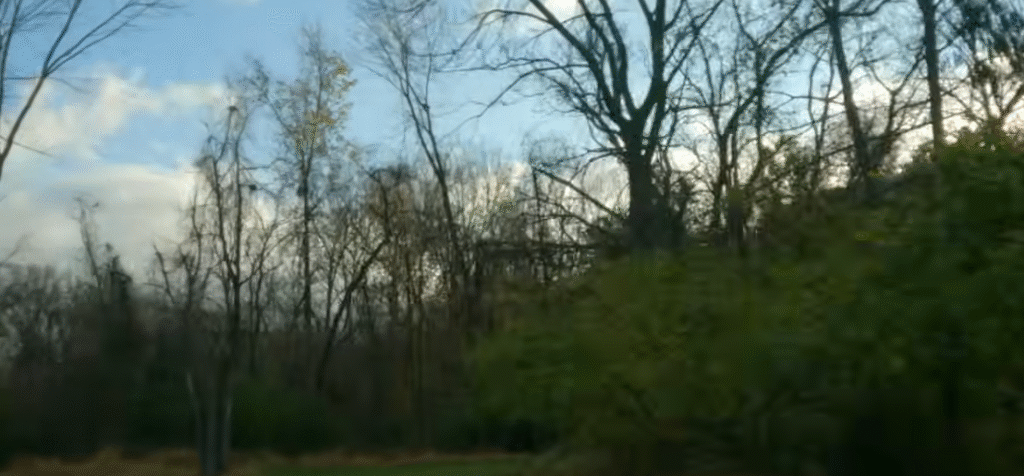An early indication that convenience can occasionally mask significant risk was Times Beach, Missouri, a charming riverside town tucked away along Route 66 that offered reasonably priced lots bundled with newspaper subscriptions. Established in 1925, the neighborhood drew retirees and working-class families looking for a more leisurely pace. Beneath the small-town charm, however, was a slow-burning chemical disaster that was caused by a combination of ignorance, neglect, and incredibly inadequate regulation rather than malicious intent.
In an effort to reduce dust, local waste oil hauler Russell Bliss started spraying roads with a blend of spent motor oil and waste chemicals in the early 1970s. The service was viewed as a straightforward remedy for an expanding issue because it was remarkably inexpensive for financially strapped towns like Times Beach. However, this mixture would eventually saturate 23 miles of dirt roads with high concentrations of dioxin from NEPACCO’s leftover chemical waste, making Times Beach one of the most toxic communities in America.
Unusual illnesses started to appear all over Missouri during the following ten years. Birds died from rafters, children developed mysterious skin conditions, and horses collapsed at training arenas—all of which pointed to a single, unsettling pattern. Bliss had sprayed in these places. Surprisingly, it wasn’t until 1974—followed by a number of thorough CDC investigations—that the first obvious link to dioxin was made public. By that time, the chemical had gotten into yards, houses, and people’s lives.
Location Table: Times Beach, Missouri
| Detail | Information |
|---|---|
| Location | St. Louis County, Missouri, USA |
| Distance from St. Louis | 17 miles (27 km) southwest |
| Founded | 1925 |
| Disincorporated | 1985 (by Missouri Governor John Ashcroft’s executive order) |
| Elevation | 436 feet (133 meters) |
| Cause of Evacuation | Dioxin (TCDD) contamination from oil sprayed on dirt roads |
| Evacuation Year | 1983 |
| Population Before Crisis | Over 2,000 residents |
| Cleanup Completion | 1997 |
| Current Status | Route 66 State Park (opened in 1999) |
| Reference Link | Wikipedia – Times Beach, Missouri |

The turning point was when the Meramec River rose sharply in December 1982, flooding Times Beach and further contaminating the area. The toxic dioxin levels, which were far above safety thresholds at 0.3 ppm, were confirmed by the EPA’s soil tests, which were finished just one day before the waters surged. Upon evaluating the danger, emergency personnel realized that saving the town would be extremely costly and disruptive.
In an unprecedented move that demonstrated the seriousness of the threat, the federal government declared on February 22, 1983, that it would purchase every residence and business in Times Beach. Homes, heirlooms, and decades’ worth of memories were left behind when more than 800 families were compelled to relocate. Kids who used to play in the streets barefoot would never come back. Parents moved with compensation checks but without peace of mind because they were scared and confused. Future sickness remained a concern, which was particularly heightened by preliminary research indicating that extended exposure to dioxins may cause genetic and reproductive harm.
After the town was formally dissolved in 1985, all of its buildings—including houses, utility poles, and even the water tower—were eventually burned down. The remains were interred in what is now Route 66 State Park, a huge grass-covered mound. Once a bustling, if small, town, it is now a surprisingly peaceful natural setting. However, beneath the picnic tables and walking paths are remnants of a sinister past that few tourists are aware of.
Surprisingly, Missouri’s park system has benefited greatly from the site’s transformation. With features like hiking trails and river access, Route 66 State Park welcomes thousands of visitors each year. While the park’s visitor center, which was originally a roadhouse and later the EPA’s field office, is the only surviving building from Times Beach’s past, cyclists pedal past interpretive signs detailing the town’s history. It serves as a subdued reminder that acknowledgment and reinvention are frequently necessary for healing.
More broadly, Times Beach contributed to a series of legislative changes that reshaped environmental safety across the country. The incidents at Times Beach and other similarly contaminated sites had a major influence on laws like the Comprehensive Environmental Response, Compensation, and Liability Act (CERCLA), popularly known as Superfund. The town came to represent not only loss but also perseverance, demonstrating how institutional failure can lead to systemic defense.
The catastrophe was a rallying cry for environmentalists and celebrities. When talking about corporate responsibility and chemical transparency, activists like Erin Brockovich and groups like Greenpeace have brought up Times Beach. The similarities between Centralia in Pennsylvania and Love Canal in New York became points of discussion in the media, leading to government hearings, documentaries, and books.
Decades later, the argument over the true health effects is still surprisingly nuanced. Since there has been no conclusive evidence of a rise in illnesses among the inhabitants, some have questioned whether the evacuation was really necessary, including the American Medical Association. Others contend that prompt relocation, rather than a lack of risk, may be the cause of the absence of illness. They claim that the decisions were extremely wise even though they were painful, and that the fear was genuine.
Times Beach was declared safe for public use by the EPA in 2001 after it was formally removed from its Superfund priority list. A long and emotional journey came to an end in 2012 when additional soil tests revealed no serious health risks for park employees or visitors.

